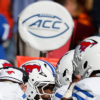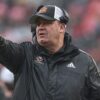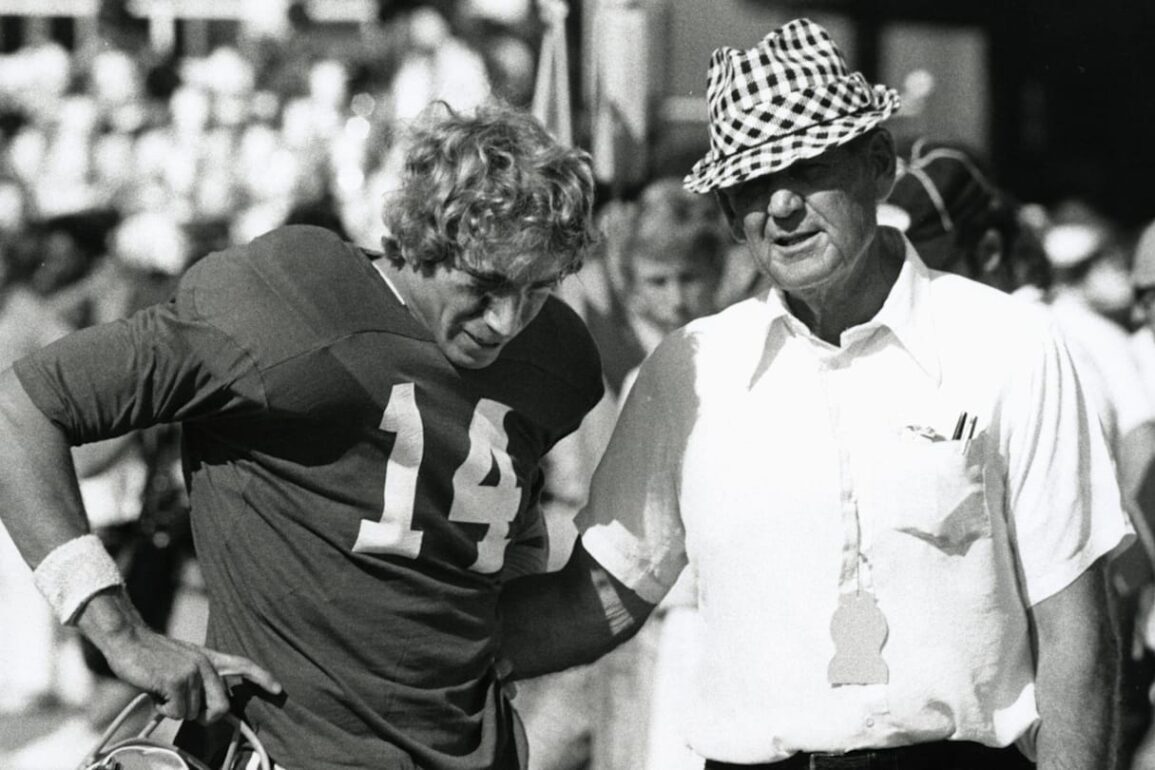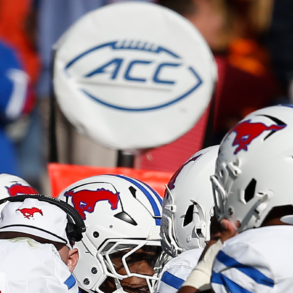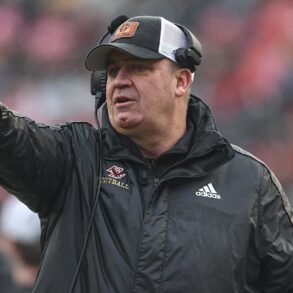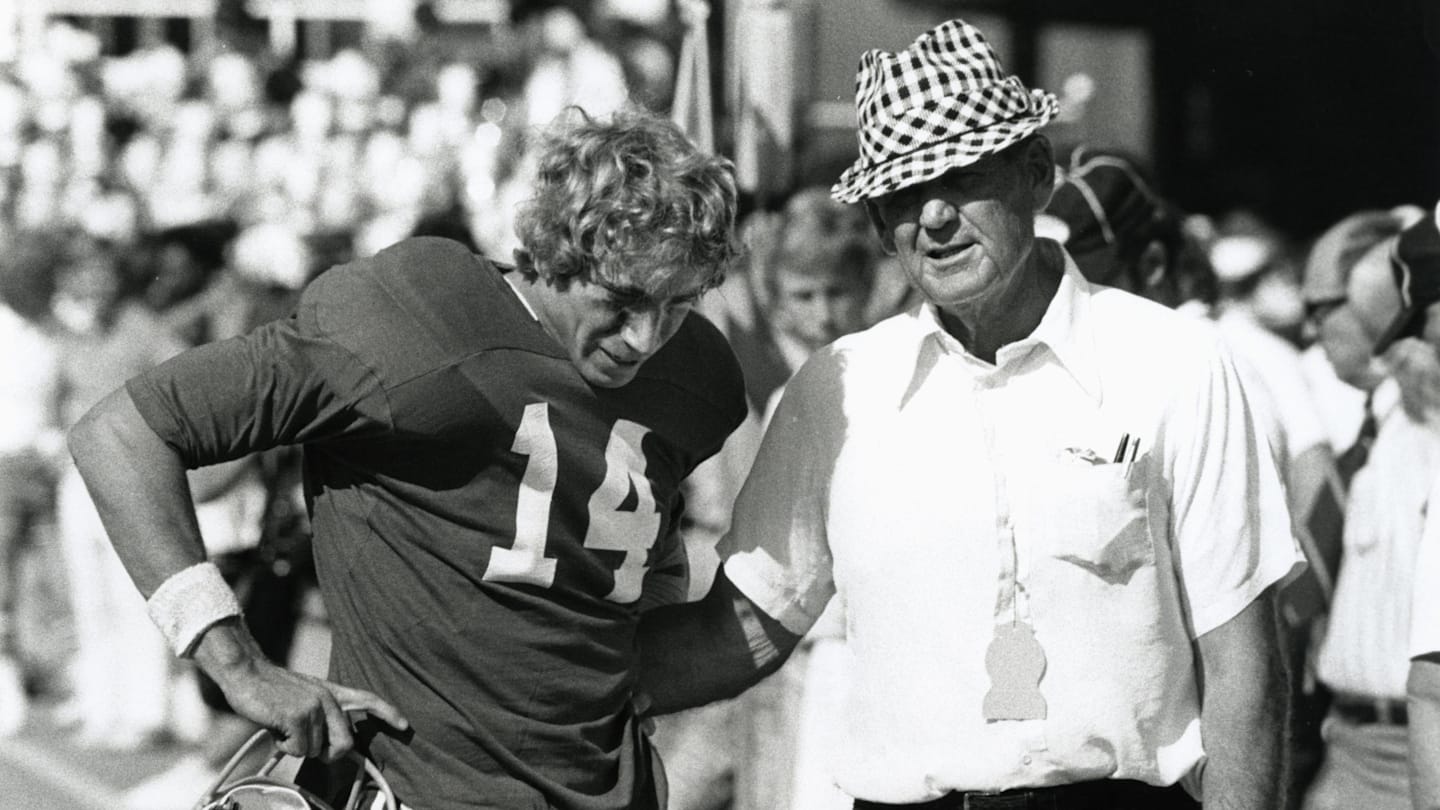
In college football, games and legacies can be decided by a matter of inches.
Throughout much of college football history, even a single loss could derail a team’s hopes for a national championship. A tipped pass, a bad call, or an unlucky ball bounce can flip a game’s outcome in one-score games.
Inspired by the Nebraska Cornhuskers’ historic trend of losing so many close games over the last decade, I decided to dive into college football history to see how different the sport might look if the outcome of every one-score game was flipped season by season.
Welcome to What If: The 1975 Season.
Other What If seasons: 1973, 1974
Prior to the 1975 season, the Big 10 and Pac-8 only sent teams to one bowl game—the Rose Bowl. This season, the conferences finally allowed more teams to play in bowl games, which meant The Game would no longer eliminate one program from the postseason. The 1975 season opened with the Blue Bloods in the top five spots: Oklahoma, Alabama, Michigan, Ohio State, and USC.
The season opened with a bang, with unranked Missouri upsetting No. 2 Alabama in the first week of the season, launching the Tigers to the top five by the next poll. Oklahoma, which hadn’t lost a game in nearly three seasons, lost its top ranking after two close wins to Miami and Colorado, while Ohio State dominated UCLA to flip the top two teams.
Ohio State and Oklahoma would remain in the top two spots until the Kansas Jayhawks pulled off a stunning upset of the Sooners in Norman. Tom Osborne’s Huskers would slide into the No. 2 spot until faltering to the Sooners in Norman, which sent Oklahoma to the Orange Bowl to play for a title. The Game once again decided the Big 10’s Rose Bowl participant, with the Buckeyes getting another close win in the series. The Southwest Conference finished in a three-way tie between Arkansas, Texas, and Texas A&M, with Arkansas earning a Cotton Bowl bid.
Unbeaten teams: Arkansas State (11-0), Ohio State (11-0), and Arizona State (11-0)
Despite finishing third on his team in rushing touchdowns and 20 scores behind Buckeye’s leader, Pete Johnson, Archie Griffin would win his second consecutive Heisman Trophy. The nation’s leading rusher, USC’s Rickey Bell, would finish third in the Heisman voting, with the Trojans finishing fifth in the Pac-8.
The major bowl bids were contentious this year, as teams were selected in the middle of November. The Orange Bowl invited the Big 10 runner-up to play the Big 8 champion, effectively eliminating Alabama from the national championship picture. After Georgia accepted a Cotton Bowl invite, the Sugar Bowl was the only spot left for the Big 8 runner-up. Bear Bryant had earned a reputation for picking his bowl opponents, and it was rumored he would be pulling his weight to pick against the Big 8. This prompted Tom Osborne to tell the Sugar Bowl executive secretary, “Tell that son-of-a-buck in Alabama not to duck us.” The Sugar Bowl would ultimately go with Penn State, while the legendary Husker coach suggested moving to a playoff format.
|
Bowl |
Winner |
Loser |
|---|---|---|
|
Cotton Bowl |
Arkansas (10-1) 31 |
Georgia (9-2) 10 |
|
Sugar Bowl |
Alabama (10-1) 13 |
Penn State (9-2) 6 |
|
Rose Bowl |
UCLA (8-2) 23 |
Ohio State (11-0) 10 |
|
Orange Bowl |
Oklahoma (10-1) 14 |
Michigan (8-1-2) 6 |
The Rose Bowl was a rematch of the October 4 matchup of the Buckeyes and Bruins. A win would give Woody Hayes’ Buckeyes a national championship as the unbeaten Arizona State Sun Devils were ranked well behind at seven. The Bruins would win the rematch, though, dropping Ohio State to third in the final poll. Oklahoma’s defeat of Big 10 runner-up Michigan would give Switzer’s squad their second straight national championship.
Kentucky flips their record from 2-8-1 to 8-2-1 to finish third in the SEC. Florida State, Rice, and Wyoming all see their records improve by a respectable five games, going from 2-3 wins to 7-8 wins. Memphis drops five games from 7-4 down to 2-9. However, the most consequential drop is Oklahoma, coming off a two-year bowl probation—their record drops by four games in the alternate universe. At 6-5, Switzer’s squad would’ve been nowhere near the national title race.
For the first time in this series, the Heisman race is altered by the change in records. Archie Griffin finished with the third most rushing touchdowns at Ohio State, trailing Pete Johnson by 20 that season. With Ohio State, Ricky Bell’s USC, and Tony Dorsett’s Pitt all finishing at 9-2, the Heisman race would be more of a matter of stats. Ricky Bell led the nation in rushing and yards from scrimmage. With the Trojans winning the Pac-8, I think he would be crowned the Heisman winner in 1975, followed by Griffin and Dorsett.
Unbeaten teams: None
With no unbeaten teams, Bear Bryant’s one loss Alabama gets its opportunity to play for the title. The SEC champion heads to the Sugar Bowl against the nation’s best independent team in Pitt. The Huskers drop to 8-3 in this exercise but still claim the Big 8 title, earning an Orange Bowl bid against Big 10 runner-up Michigan. Arkansas claims the Southwest championship with a 10-1 and a chance to earn a share of a title against the SEC runner-up Florida. The Rose Bowl is now the fourth straight matchup of Ohio State and USC, unlike Woody Hayes’s prediction of an Ohio State-UCLA rematch.
|
Bowl |
Winner |
Loser |
|---|---|---|
|
Cotton Bowl |
Arkansas (10-1) |
Florida (9-2) |
|
Sugar Bowl |
Alabama (10-1) |
Pittsburgh (9-2) |
|
Rose Bowl |
Ohio State (9-2) |
USC (9-2) |
|
Orange Bowl |
Nebraska (8-3) |
Michigan (7-2-2) |
Ohio State and USC played three common opponents in 1975. While both teams go 3-0 against them in the hypothetical, Ohio State dominated them while USC had smaller margins of victory in each. I expect Woody Hayes would earn another Rose Bowl trophy. The Orange Bowl would’ve been a great matchup with one of the Big 8’s best quarterbacks, Vince Ferragamo, squaring off one of the Big 10’s best running backs, Gordon Bell. The Huskers had a balanced offense under Ferragamo that I think would’ve outlasted the Wolverines.
Alabama and Arkansas could each make a claim for the title with a win. The Razorback offense finished 8th in the country, which would be a great matchup with the 5th-ranked Gator defense. Ultimately, Florida’s offense wouldn’t be able to keep up with the Arkansas offense and Arkansas would finish 11-1.
The Alabama offense finished third in the nation in 1975. Its defense was even better, allowing just 6 PPG all season. Pitt legend Tony Dorsett would likely keep the Panthers in the game, but ultimately, Alabama was too good for Pittsburgh. At the end of the season, the voters would be left in a challenging situation with two 11-1 major conference teams. I think Bear Bryant’s pedigree and Alabama’s success in the SEC would be enough for Alabama to be crowned the champion, with Arkansas as the runner-up.
The 1975 What If is a significant change in the college football landscape. Barry Switzer’s Sooners suffer a considerable decline after two years of dominance. I don’t think Switzer’s job would be in jeopardy after a 6-5 season, but it would be a worse season than he ever posted in reality. Bear Bryant was already a college football legend at this point. Taking home a title in 1975 would’ve only accelerated the timing of this fifth ring.
MORE: Why Did Nebraska Football Cancel The Spring Game?
MORE: Signee Analysis: Running Back Jamarion Parker
MORE: Signee Analysis: Running Back Conor Booth
MORE: Second Quarter Dooms Huskers as Nebraska Women’s Basketball Falls to Michigan
MORE: Jordy Bahl Blasts Homer, Gets Win in Husker Softball’s Season Opener vs. No. 6 Tennessee
Stay up to date on all things Huskers by bookmarking Nebraska Cornhuskers On SI, subscribing to HuskerMax on YouTube, and visiting HuskerMax.com daily.
This post was originally published on this site be sure to check out more of their content.


